Links:
Links to people who have helped me in my endeavour to find ID’s and sites I have used as reference. To whom, and for which I’m most grateful:
People: Dr Joe Botting – Dr Tristan Bantock – Dr Herbert Nickel
Sites:
British Bugs* – Fauna Europaea – Wikipedia* – Nature Spot – iSpot* – UK Moths – Flora – Botanical Society of Great Britain & Ireland – National Barkfly Recording Scheme (Britain and Ireland)* – InfluentialPoints,Com – Eakring Birds – BRC Database of Insects and their Food Plants – Ledra
* Webb sites where my images can be found.
______________________
My Library:
Insects of Britain and Western Europe by Michael Chinery
The Ecology of Running Waters by H. B. N. Hynes Professor of Biology, University of Waterloo, Ontario, Canada
* Books that have used an/a image/s of mine.
______________________
Fauna
Welcome! All natural aspects of my garden are explored daily. All my observations are recorded both photographically, and by way of this blog. Hopefully all records will be supported by an image, or 2.
______________________
Volucella inflate
Click for more info Volucella inflate
Volucella pellucens
Click for info on Volucella pellucens
Volucella bombylans
Click for info on Volucella bombylans
Volucella inanis
Click for info on Volucella inanis
Myathropa florae
The bat motif on the posterior half of the thorax makes this one of the easier hoverflies to ID. Can be found in gardens or woodland glades. This specimen was on mint in my garden. In the woodland glades it will often be found hovering in beams of sunlight, where it will readily come to hand.
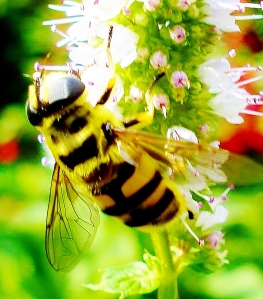
Megachile (Megachile) centuncularis
I have used the trinomial name here, for Googling use the binomial name. There are 9 species of Megachile on the British list, all can be found on the BWARS site, the link will take you to this species page. The images depict a bee cutting a piece out of a rose leaf, right up to the shot with it flying off with its bounty.
Psyllopsis fraxinicola
So, starting with the 24th June 2016, and right on my front door step the Psyllid, Psyllopsis fraxinicola. It is a member of the Order: Hemiptera, the Suborder, Sternorrhyncha, and the Superfamily: Liviidae, Family, Psyllidae. It belongs to the Genus: Psyllopsis of which there are 3 species, the other 2 being P. discrepans, and P. fraxini. P. fraxinicola , it will be noted, differs from the other 2 by virtue of its transparent wings. All 3 are host specific to Ash, Fraxinus species. Overwinters as eggs, hatching in April/May. Adult phenology: June to October. Length: 3 to 3.5 mm.
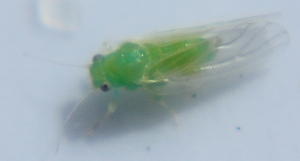

Psyllopsis fraxini
Also found on the same tree in my garden, Psyllopsis fraxini, however not on this day. For comparison only.
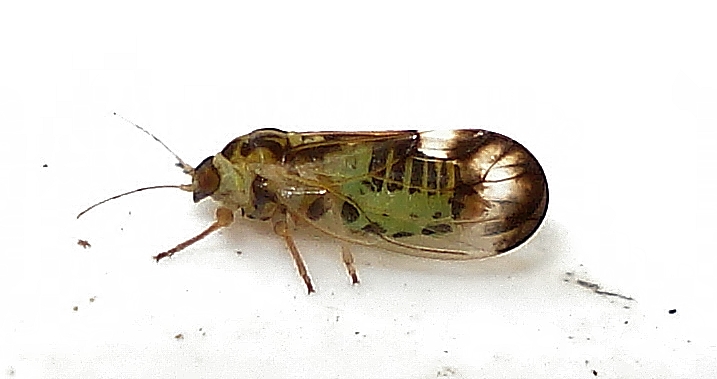
Psyllopsis discrepans
Not found in my garden, images put up for comparison only.
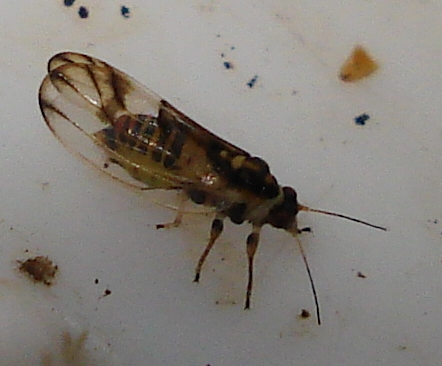
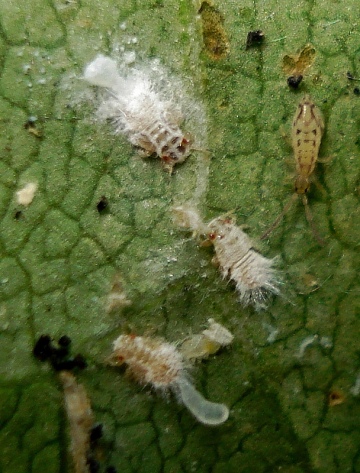
Oak Bush Cricket
Not rare locally, in my garden though, definitely so. indeed only the second record for the Oak Bush Cricket in nearly 30 years. First time it was an adult, this time a nymph. I have put an image up but a not so one. This one was tapped off Elder and was not very obliging, so I will go through my archives and find a better photo, which I will upload at a later date. More….
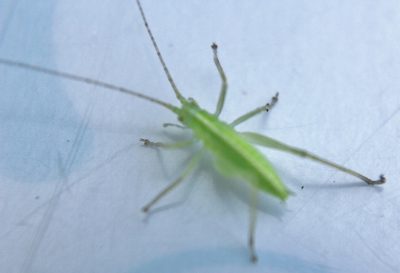
Vine Weevil
A large weevil, ~11 mm long, parthenogenetic, there are no males, although I have read that males can be produced if the eggs are fertilised, followed by no males have been recorded, strange! It is flightless due to the elytra being fused. The larvae feed on the roots of various plants, likewise with the adults, but only on the leaves. Often found in the home, as it is attracted to light. Scientific classification: Order: Coleoptera. Family: Curculionidae. Subfamily: Entiminae. Tribe: Otiohynchini. Genus: Otiorhynchus
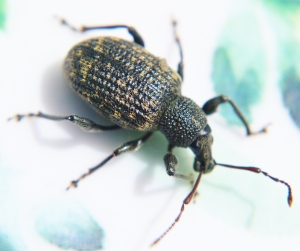
Otiorhynchus sulcatus
Oncopsis cf flavicollis
Found on Silver Birch. A facial view is needed to ID this species with any certainty as O. subangulata, which is very similar to O. flavicollis is also found on Silver birch and both species can be found together. O. flavicollis having more intense face marking with more prominent discoidal spots. Both species are similar in length being 4.5 to 5.5 mm long. Phenology: Adults from May to September, eggs overwinter and hatch in early spring.
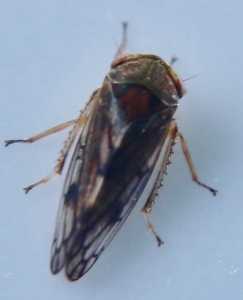
Oncopsis cf flavicollis
A robber fly. Tapped from Sycamore. Length: ~12 mm. Phenology: From early March to late June
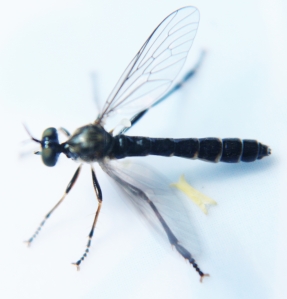
Heterocypris cf incongruens
Scientific classification: Kingdom: Animalia. Phylum: Arthropoda. Subphylum: Crustacea Class: Ostracoda Subclass: Podocopa. Order: Podocopida. Suborder: Cypridocopina. Superfamily: Cypridoidea. Family: Cyprididae. Genus: Heterocypris. Species: incongruens
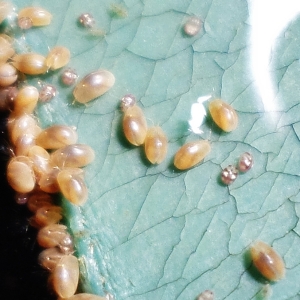
Ribautiana tenerrima
National status: Common, except in northern Scotland. Host plants: Brambles and various other flora. Separated from other Ribautiana species by the oblique white lines along the corial-claval suture, but may not be well-defined in some specimens. A good key factor is that the vertex is narrower than the pronotum. Other key points: The darkening at the end of the forewings, the three clear dark dots on the wing margin.
Scientific classification: Kingdom: Animalia. Subkingdom: Eumetazoa. Phylum: Arthropoda. Subphylum: Hexapoda. Class: Insecta. Order: Hemiptera. Suborder: Cicadomorpha. Superfamily: Membracoidea. Family: Cicadellidae. Subfamily: Typhlocybinae. Tribe: Typhlocybini. Genus: Ribautiana. Species: tenerrima. Phenology: Adult: June to December, possibly overwinters. Length 3-3.5 mm
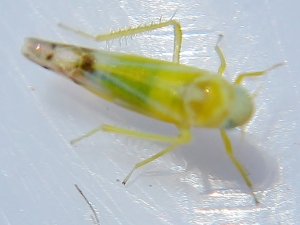
Ptilinus pectinicornis
Commonly known as the ‘Fan-bearing Wood-borer’, of which it is only the male that can fully claim this title as can be seen in the images. It is most definitely a polyphagus eater, it can be found on most of the UK’s decidious trees such as, Ash, Alder, Beech, Elder, Elm, Field Maple, Hornbeam,Norway Maple, Oak, Poplar, Sallow, Sycamore, and there could be more. My specimen was tapped from Common Oak. It is the larvae that do the boring bit only coming close to the surface to pupate, when in early summer, (probaly late spring too), adults can be found emerging from there chosen host when the act of procreation takes place. At to whether the eggs are laid in, or on the tree I don’t know. Of the actual length of time spent at the larval stage I also don’t know, any data aluding to the 2 latter topics will be most appreaciated. For what it is worth that is as much as I know re this species phenoloy traits. Length: 3 to 5 mm.
Scientific classification: Kingdom: Animalia. Subkingdom: Eumetazoa. Phylum. Arthropoda. Subphylum: Hexapoda. Class: Insecta. Order: Coleoptera. Suborder: Polyphaga. Infraorder: Bostrichiformia. Superfamily: Bostrichoidea. Family: Anobiidae. Subfamily: Ptilininae. Genus: Ptilinus. Species: pectinicornis.
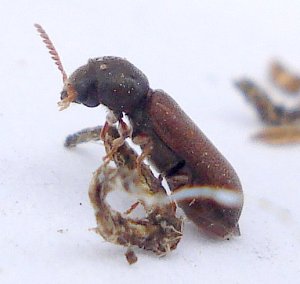
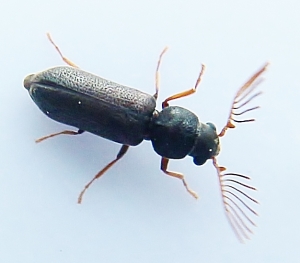
Hauptidia maroccana
Off Foxglove its main host, can also be found on Campion’s. Please note that the site British Bugs shows the phenological period for this species as August to March, probably a typo as they have image taken in the months April, May, outside of period the they have suggested. I also have historical records outside of the months suggested by BB. I mention this for the benefit of recorders who might of sought to check this record out, for I know no one one on the iRecord admin will, mind you I love to be proved wrong. Should I get the responses from the cleaner, Date out of seasonal limits, and or, Out of range of known coordinates, then we’ll know they haven’t. Not this particular record but the one I recorded in 2008 is, I think, a 1st for Lincolnshire. Length: 3-3.5 mm.
Scientific classification:
Kingdom: Animalia. Subkingdom: Eumetazoa. Phylum: Arthropoda. Subphylum: Hexapoda. Class: Insecta. Order: Hemiptera. Suborder: Cicadomorpha. Superfamily: Membracoidea. Family: Cicadellidae. Subfamily: Typhlocybinae. Tribe: Erythroneurini. Genus: Hauptidia. Species: maroccana
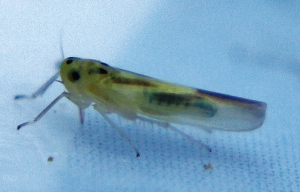
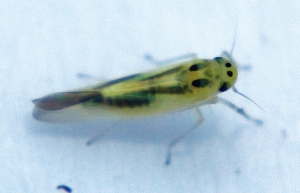
Zygina angusta
Z. angusta is a very variable species, and difficult to separate from Z. ordinaria. The male hind tarsus is less than half the length of the hind tibia and the apical segment and apical half the of middle segments are dark. The scutellum tends to be mostly brown, with the anterior corners and sometimes the midline pale. The clavus is darkened between the red bands (unlike Z. flammigera), the extent of which varies greatly. Recorded on a Rambling Rose. Lengyh: 3=3.5 mm.
Thg phenology account on the site, ‘British Bugs’, is in my opinion, confusing. To say it overwinters on evergreens, followrd by, ‘Adults:: July to May’, beggers the question, what happened to June? It mighy be considered pedantic by some, but if this data has been fed into the NBN record cleaner, the auttomattic response from it will be, ‘Dates outside of known seasonal limits’, casting the aspersion that my record of the date could be an error. or indeed false. It has been suggested to iRecord by mself, and others, that this anomally, along with others should be corrected. Their response was, ‘We are aware that the cleaner is not perfect, however things will stay as they are untill funds become available to make correction’. I hasten to add that it is not just me that has issues with iRecord, and its use of the ‘NBN record cleaner’ as it is.
Scientific Classification:
Kingdom: Animalia. Subkingdom: Eumetazoa. Phylum: Arthropoda. Subphylum: Hexapoda. Class: Insecta. Order: Hemiptera. Suborder: Cicadomorpha. Superfamily: Membracoidea. Family: Cicadellidae. Subfamily: Typhlocybinae. Tribe: Erythroneurini. Genus: Zygina. Species angusta.
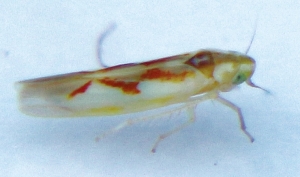
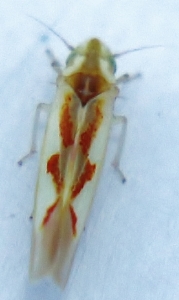
Chamaepsylla hartigii
Kingdom: Animalia. Subkingdom: Eumetazoa. Phylum: Arthropoda. Subphylum: Hexapoda. Class: Insecta. Order: Hemiptera. Suborder: Sternorrhyncha. Superfamily: Psylloidea. Family: Psyllidae. Genus: Chamaepsylla. Species: hartigii.
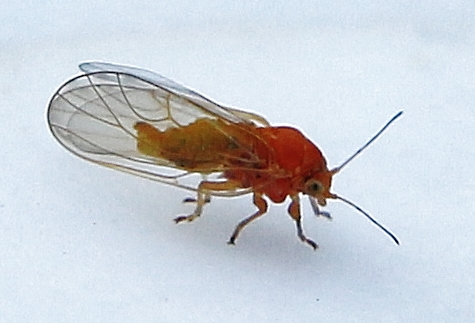
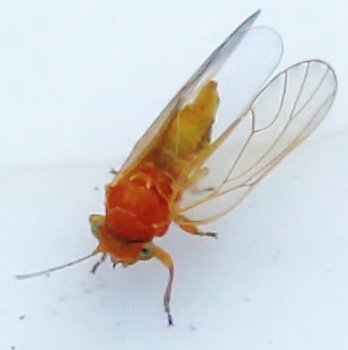
Eupeodes luniger
Scientific classification: Kingdom: Animalia. Phylum: Arthropoda. Class: Insecta. Order: Diptera. Family: Syrphidae. Genus: Eupeodes. Subgenus: Eupeodes. Species: luniger.
TOP
Anania coronata
Kingdom: Animalia. Subkingdom: Eumetazoa. Phylum: Arthropoda. Subphylum: Hexapoda. Class: Insecta. Order: Lepidoptera. Superfamily: Pyraloidea. Family: Crambidae. Subfamily: Pyraustinae. Genus: Anania. Species: coronata.
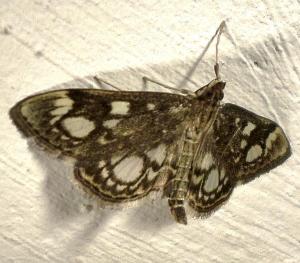
Javesella discolour
Order: Hemiptera/ Suborder: Fulgoromorpha. Family: Delphacidae. Subfamily: Delphacinae. Tribe: Delphacini. Genus: Javesella. Subgenus: Javesella. Species: discolour.
Sow Thistle Leaf Mines
Probable cause, one of the following flies, please do click on them for more information, thank you. Chromatomyia syngenesiae – C. horticola
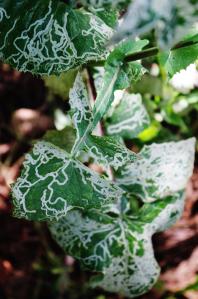
TOP
Common Ivy Aphid
Aphis (Aphis) hederae. Far more to be found if you follow the more link. More…
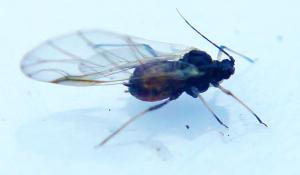
TOP
Streptopelia decaocto – Collared Dove
TOP
Comma Butterfly
Common Darter – Sympetrum striolatum
My first Dragonfly this summer, YAY! Had the wrong ID, this is the correct one. For those who did not see/read, I had it up as the hairy dragonfly.
Pete Hillman’s Nature Photography
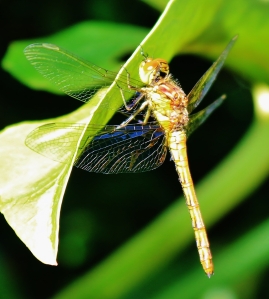
Sympetrum striolatum
______________________
MANY PLUMRD MOTH – ALUCITA HEXCADACTYLA
Many Plumed Moth is, I think, a more appropriate common name, as its other common name is, ‘The 20 Plume Moth’,. definitely a misnomer, both more vernacular, as in depending on what part of the British Isles one hails from. The scientific name sort of hits tail on the head as it refers to the number of plumes more accurately, as in 6 fingered. Mmm, I’ll have to count them now, as I sure there are more than six. (Space to insert my count) More details can be found here.
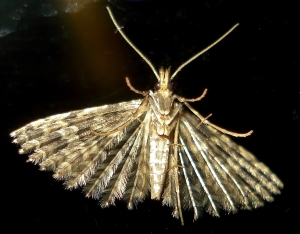
______________________
Unidentified Species
I will hopefully be able to identify all, or at least some at a later date.
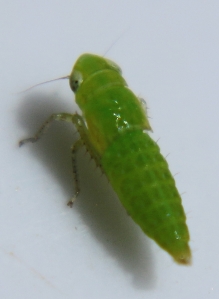
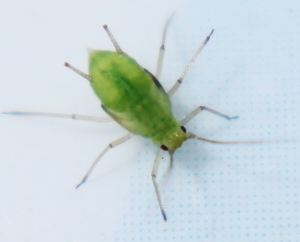
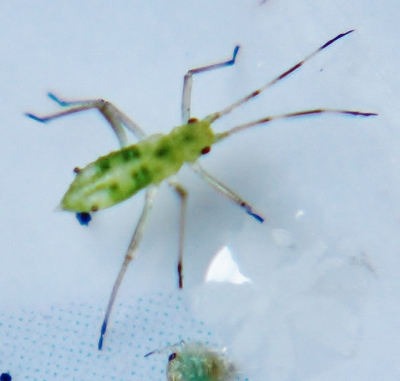
Blog species links – FLORA
Bramble
Goose Grass
Silene dioica
Smooth Sow Thistle
Wall Speedwell
White Lilac
Flora
Common Oak
Quercus robur, also known as the English Oak and probably more PC, the Pedunculate oak. At present I have 3 in my garden, 2 saplings undergoing bonsai treatment and 1 that is, and now a large 15 year old, just over 1 M. tall. For more information on this species please have a look here, where you will find far more data, which would take up to much space on this blog, thank you.
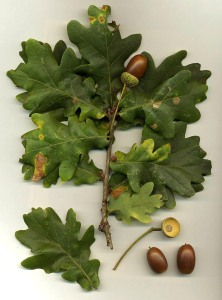
TOP
Red Campion
More extensive information, and data will be found here, far more than my blog can handle.
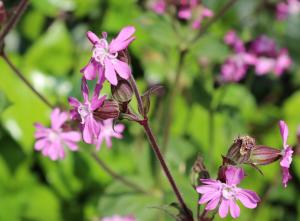
Bramble
Again more information, and data can be found here, far more than I could give, and my blog could handle. I hasten add that I will put up an image of the Brambles in my garden as and when I get one good enough.

Wall Speedwell – Veronica Arvensis
A surprise find whilst removing Himalayan Balm seedlings from around the pond. More….
Goose Grass – Galium aparine
Goose Grass, also known as Stickyweed, Catchweed, Robin-run-the-hedge, Coachweed, Cleavers, Stickywilly, Sticky Bud, White Bedstraw. More…
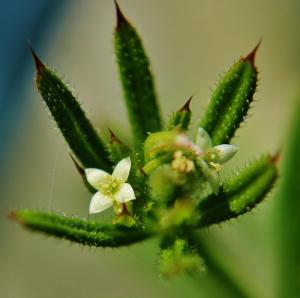
Smooth Sow Thistle
Sonchus oleraceus: Leaves have a satin bloom, they are not glossy, un-like Perennial Sow-thistle (Corn Sow-thistle). Leaves are pinnatifid have broad lobes, triangular in overall shape apically.
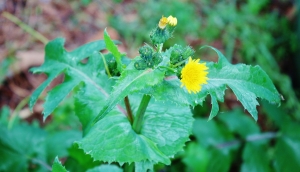
Syringa vulgaris
Syringa vulgaris (lilac or common lilac) is a species of flowering plant in the olive family Oleaceae, native to the Balkan Peninsula, where it grows on rocky hills. This species is widely cultivated as an ornamental and has been naturalized in other parts of Europe (UK, France, Germany, Italy, etc.), as well as much of North America. It is not regarded as an aggressive species, found in the wild in widely scattered sites, usually in the vicinity of past or present human habitations. More……
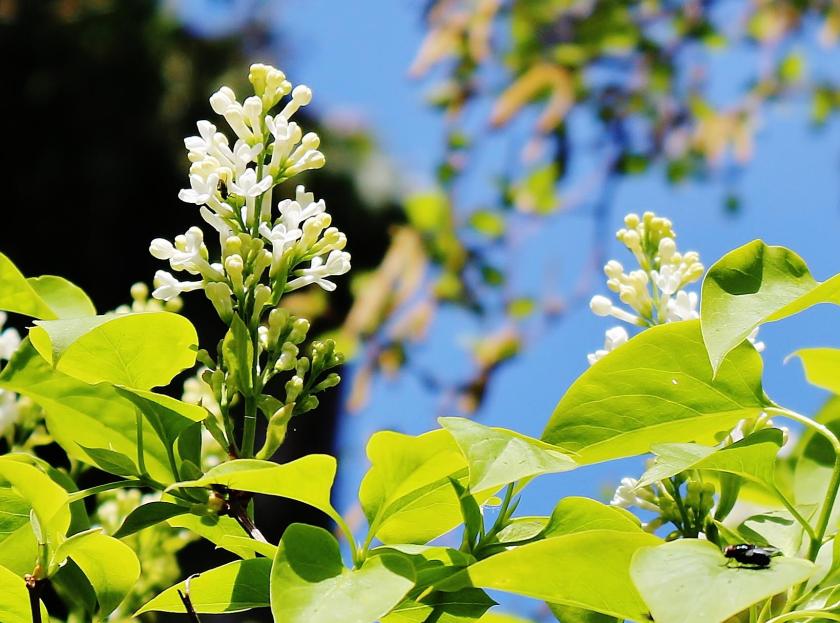





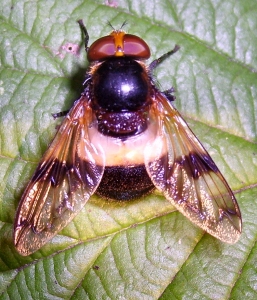



























You must be logged in to post a comment.